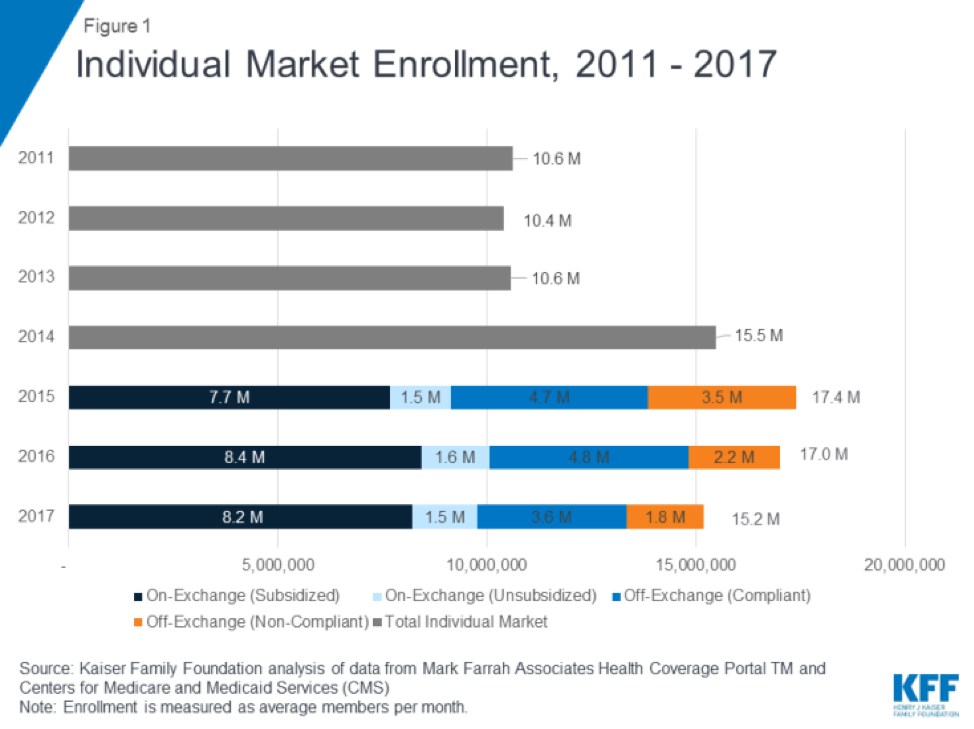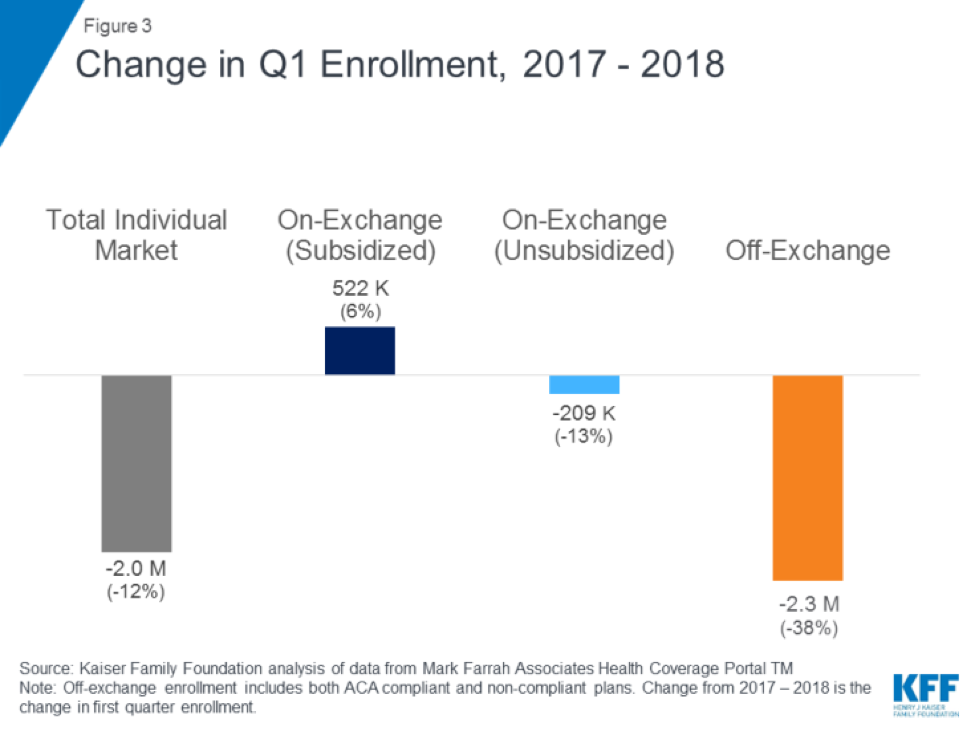A report published this week by the non-partisan Kaiser Family Foundation confirms, once again, who is most affected by instability in the Affordable Care Act‘s non-group markets: middle-income Americans who don’t receive health insurance through their employer but earn too much to qualify for federal subsidies to purchase insurance on their own.
The KFF researchers analyzed enrollment in the individual insurance market between 2014 and the first quarter of 2019. As the chart below indicates, individual market enrollment increased after the ACA went into effect, peaked in 2015, and has been falling since then:

In the first quarter of 2018, individual market enrollment declined by about two million people (or 12 percent) in comparison to the first quarter of 2017. The researchers also broke down these numbers into subsidized (by the federal government) and unsubsidized enrollment. As the chart below illustrates, they find that the declines in enrollment seen in 2018 are driven by a drop in enrollment among unsubsidized Americans (i.e. those earning too much to qualify for subsidies under the ACA):

This data isn’t surprising. Premiums increased sharply in 2017 and 2018. Consumers eligible for ACA subsidies were largely protected from premium increases (since the ACA’s subsidies are pegged to premiums), but slightly-higher-income Americans were not, and quite a few of them apparently opted to forgo health insurance in the face of skyrocketing premiums. In fact, the KFF researchers found that “states that had larger premium increases saw larger declines in unsubsidized ACA-compliant enrollment … suggesting a relationship between premium hikes and enrollment drops.”
The KFF report arrives as the Trump administration is preparing to release a new rule relaxing regulations on short-term insurance plans (which are not subject to many of the ACA’s regulations); many economists and health-care experts are concerned the rule could draw still more healthy, unsubsidized enrollees out of the ACA-compliant marketplace, driving premiums up even more.
The report also comes alongside new polling data from KFF suggesting that health care is emerging as an increasingly important issue in the mid-term election. Thirty-three percent of Democrats say that health care is the most important issue in the upcoming election; only 30 percent pick President Donald Trump as the most important issue. Among the general public, 26 percent pick Trump as their top issue and 25 percent pick health care. In a column for Axios, KFF chief executive Drew Altman suggests “this is an election where health care may not only be a top issue, but also a critical factor in the vote.”
Voters would be wise to consider the insurance instability illustrated in the report.



